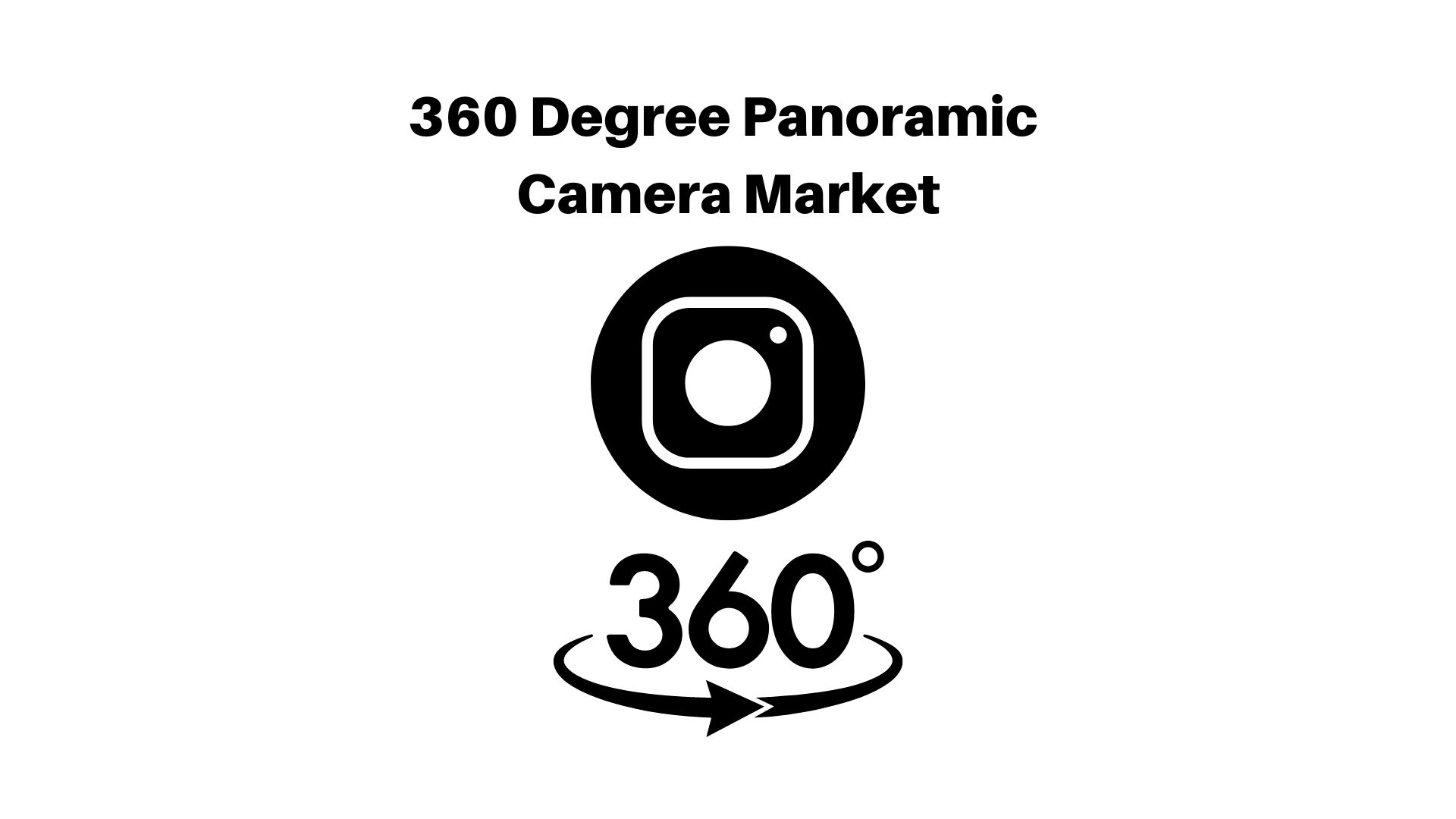Global 360 Degree Panoramic Camera Market Analysis (USD 1217.12 bn) | Development Ideas By 2033

Page Contents
Market Overview
In 2022, the 360 Degree Panoramic Camera market was valued at USD 142.88 Billion and is forecast to reach a value of USD 1217.12 Billion by 2032 at a compound annual growth rate (CAGR) of 23.89%.
360-degree panoramic cameras allow viewers to see a 360-degree view from a particular area or scene. The growing demand for high-quality visual content has led to a tremendous increase in the market for 360° panorama cameras.
The increasing demand for virtual and augmented reality (AR) applications in various industries are driving the market growth for 360-degree panoramic cameras. 360-degree cameras are also becoming more common at sporting events, concerts, as well as other live events in order to capture immersive material. Further boosting this sector's growth, automotive OEMs will likely incorporate these cameras in their advanced driver assist systems (ADAS).
Download a Full PDF Preview of the Study at- https://market.us/report/360-degree-panoramic-camera-market/request-sample
Key Takeaway
- The 360 Degree Panoramic Camera market is growing rapidly due to the rising demand for high-quality, immersive visual content across various industries such as gaming, entertainment, education, healthcare and advertising.
- The market is projected to experience a high compound annual growth rate (CAGR) over the coming years, driven by the increasing adoption of virtual and augmented reality applications as well as rising demand for advanced driver assistance systems (ADAS) within the automotive industry.
- The market is highly competitive, with leading players such as Samsung, Ricoh, Insta360 and GoPro investing heavily in product innovation and development to gain an edge.
- The commercial segment, such as real estate, tourism and advertising applications, is expected to dominate the market due to an increasing demand for immersive content used for promotional and marketing purposes.

Regional Snapshot
- North America is anticipated to hold the largest share of the 360 Degree Panoramic Camera market during the forecast period, thanks to its advanced technology infrastructure and numerous early adopters of cutting-edge products. Furthermore, increasing use of 360-degree cameras at sports events, concerts, and other live events to capture immersive content is fueling growth within this region.
- Europe is projected to witness rapid growth in the 360 Degree Panoramic Camera market over the forecast period. The rising demand for virtual and augmented reality applications across gaming, entertainment, and education industries is fueling this expansion. Furthermore, due to Europe's highly developed automotive sector, 360-degree cameras may find application in advanced driver assistance systems (ADAS).
- Asia Pacific is predicted to be the fastest-growing region in the 360 Degree Panoramic Camera market over the forecast period. It boasts a large population and rising middle class, which are fueling demand for immersive content across various industries such as gaming, entertainment, and education. Furthermore, this highly developed automotive sector will encourage adoption of 360 degree cameras for ADAS systems.
- Regions such as the Middle East, Africa and Latin America are anticipated to experience significant growth in the 360 Degree Panoramic Camera market over the forecast period. An expanding tourism industry is fueling demand for immersive content for promotional and marketing purposes. Furthermore, healthcare services have seen an uptick in adoption of 360-degree cameras for medical training purposes.
Drivers
- Increasing Demand for Immersive Content: As virtual and augmented reality applications become more commonplace, there is a rising need for high-quality, immersive material. 360-degree cameras offer users an immersive experience, making them perfect for capturing footage for VR/AR applications.
- Growth of the Gaming and Entertainment Industries: As gaming and entertainment businesses look to capture immersive content for their audiences, demand for 360-degree cameras in this market is on the rise.
- Advancements in Technology: Recent advances in camera sensors, image processing and battery life have enabled the creation of more sophisticated 360-degree cameras with higher resolution and longer runtimes. This has made 360-degree cameras more accessible and affordable for consumers.
- Adoption of advanced driver assistance systems (ADAS): 360-degree cameras are becoming more and more commonplace in automotive industry for ADAS systems – systems designed to assist drivers when driving and parking. This has resulted in an uptick in sales of 360-degree cameras on the market.
- Growing Demand for Medical and Surgical Training: 360-degree cameras are becoming more widely used in healthcare facilities for medical and surgical training, fuelling growth in this market.
Restraints
- High cost: The cost of 360-degree cameras is relatively high compared to traditional cameras, which may limit their adoption by consumers and businesses with limited budgets.
- Restricted Content Creation Tools: Despite the growing popularity of 360-degree cameras, editing and postproduction software are still lacking, making it difficult for users to generate and edit 360-degree footage.
- Technological challenges: In order to give an intuitive and high-quality experience, 360-degree cameras need significant technical skills, like image stitching and video compression. These challenges, regrettably, can prevent some consumers from adopting 360-degree cameras.
- Limited Compatibility: Not all platforms and devices support 360-degree content, which may limit the reach and adoption of 360-degree cameras.
- Limited Use Cases: Though 360-degree cameras have seen increasing adoption in certain industries such as gaming, entertainment and real estate, their applications remain limited. This sets them back in other sectors and use cases.
Opportunities
- Increased Demand for Immersive Experiences: With the rise of virtual and augmented reality technologies, there is an increasing demand for immersive experiences that transport users to various environments. 360-degree cameras enable people to capture and share their memories more realistically, leading to an uptick in demand for these cameras.
- Growth of the Tourism and Hospitality Industry: The tourism and hospitality sector is always looking for innovative ways to give their customers unique, unforgettable experiences. 360-degree cameras can be utilized to create virtual tours of hotels, resorts, and tourist spots so potential clients can virtually visit before booking a flight or accommodation – giving them an immersive and personalized journey before they even step foot inside it!
- Increased Security and Surveillance Applications: 360-degree cameras are increasingly being employed in security and surveillance applications, providing a complete view of an area without blind spots. This can be especially helpful in large public places like airports, shopping malls, and train stations.
- Growing Demand in the Real Estate Industry: Real estate agents are now using 360-degree cameras to create virtual tours of properties, allowing prospective buyers to view a property from all sides before making their purchasing decision. This can be especially helpful for those who can't physically visit the property before making their choice.
- Sports organizations are increasingly turning to 360-degree cameras for immersive experiences for fans, giving them a sense of being part of the action. This type of technology can be particularly advantageous in sports like basketball, football and soccer where fans can truly feel part of the action.
Challenges
- High Price: 360-degree cameras can be pricey, making some individuals and organizations unable to purchase them.
- Restricted Compatibility: The use of 360-degree cameras may be constrained by the fact that not all platforms or devices are compatible with them.
- While 360-degree cameras offer a variety of uses, not all sectors or use cases may be appropriate for them.
- Limited Quality: Some 360-degree cameras may not capture high quality images or videos, which may limit their usefulness.
- Competition: The 360-degree camera market is becoming increasingly crowded, making it challenging for companies to stand out and gain market share.
- Technical Challenges: 360-degree cameras require specialized software and hardware to capture, process, and display images and videos – this process can be complex and necessitates technical proficiency.
Recent Developments
- Increased Adoption of 360-Degree Cameras in the Professional Market: Professional photographers and videographers are increasingly using 360-degree cameras to capture immersive content for various industries such as real estate, tourism, and events.
- Advances in Image and Video Quality: Recent advances have seen significant improvements in both image and video quality, with newer 360-degree cameras offering higher resolution and enhanced stabilization.
Before acquiring this research, find out more about it or ask any questions you have at: https://market.us/report/360-degree-panoramic-camera-market/#inquiry
Key Market Segments
Type
- Industrial Camera
- Commercial Camera
Application
- Traffic Monitoring
- Grid Layout
- Aerial Scenery
Key Market Players included in the report
- Samsung
- Ricoh
- Nikon
- Canon
- Nokia
- Sony
- Bublcam
- Panono
- Teche
- 360fly
- Efilming
- Insta360
- Guopai Technology
Report Scope
| Report Attribute | Details |
| The market size value in 2022 | USD 142.88 Bn |
| Revenue forecast by 2032 | USD 1217.12 Bn |
| Growth Rate | CAGR Of 23.89% |
| Regions Covered | North America, Europe, Asia Pacific, Latin America, and Middle East & Africa, and Rest of the World |
| Historical Years | 2017-2022 |
| Base Year | 2022 |
| Estimated Year | 2023 |
| Short-Term Projection Year | 2028 |
| Long-Term Projected Year | 2032 |
Frequently Asked Questions
Q.1: What is the current market size of the 360-degree panoramic camera market?
A: According to a report by Market.us, the global 360-degree camera market was valued at USD 142.88 billion in 2022 and is expected to reach USD 1217.12 billion by 2032, growing at a CAGR of 23.89% during the forecast period.
Q. 2: Who are the key players in the 360-degree panoramic camera market?
A: Some of the key players in the 360-degree panoramic camera market include Samsung, Ricoh, Nikon, Canon, Nokia, Sony, Bublcam, Panono, Teche, 360fly, Efilming, Insta360, Guopai Technology.
Q. 3: How is the 360-degree panoramic camera market segmented?
A: The 360-degree panoramic camera market is segmented based on type, application, and region. Based on type, the market is segmented into Industrial Camera, and Commercial Camera. Based on application, the market is segmented into Traffic Monitoring, Grid Layout, and Aerial Scenery. Regionally, the market is segmented into North America, Europe, Asia Pacific, and the Rest of the World.
The team behind market.us, marketresearch.biz, market.biz and more. Our purpose is to keep our customers ahead of the game with regard to the markets. They may fluctuate up or down, but we will help you to stay ahead of the curve in these market fluctuations. Our consistent growth and ability to deliver in-depth analyses and market insight has engaged genuine market players. They have faith in us to offer the data and information they require to make balanced and decisive marketing decisions.


